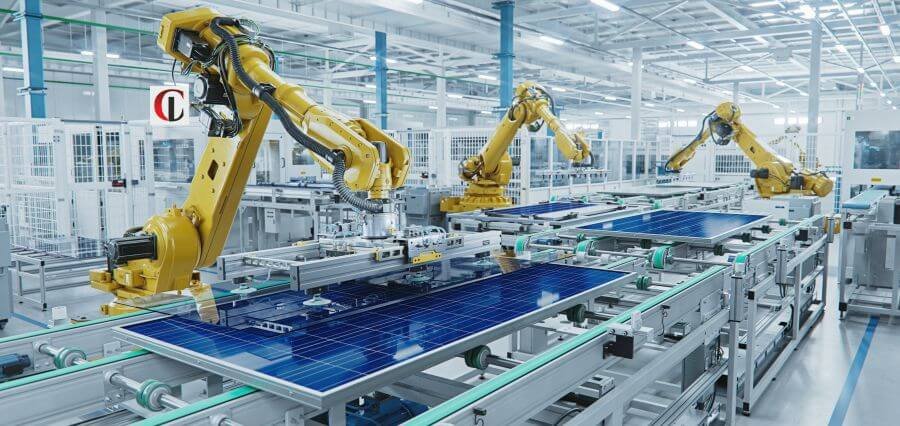Intelligent Smart manufacturing is not the future anymore—it is a rapidly developing, in-train reality transforming industry globally. At its center are the factories of the future—advanced production facilities and semiconductor fabs optimized for agility, precision, and autonomy. These sites are characterized by the seamless convergence of AI, IoT, edge computing, robotics, and data-fueled automation. But true power behind this revolution is leadership—visionary leaders who are not merely accepting technological progress but charting the cultural and operational transformation necessary to make it last.
The factories themselves might be “smart,” but it’s innovative leaders who actually make them smart.
Beyond Automation: Leadership in the Age of Intelligence
Leadership in manufacturing for decades has been about reducing cost, size, and quality defects through process engineering and automation. Though those philosophies are still applicable, the shift toward smart manufacturing demands a broader effort—a one that weaves together digital transformation with strategic vision.
Leaders of today need to be mental system architects, able to see entire digital ecosystems rather than isolated production lines. They need to see how machine data is used to train AI models, how predictive maintenance is affected by real-time analytics, and how digital twins can model factory activity to minimize downtime and inefficiency. This takes technological quickness, operational rigor, and collaborative spirit—abilities that upend conventional Smart manufacturing leadership.
Moreover, smart manufacturing leadership is not just about keeping pace with each new technology. It’s bringing innovation into alignment with business value—adopting technology that provides quantifiable outcomes such as lower cycle times, increased yield, energy efficiency, and supply chain resiliency.
The Evolving Role of the Manufacturing Leader
Smart factories don’t operate differently—they’re managed differently. Heads of Smart manufacturing no longer must be consigned to running floor operations or supply chains. They more and more are being asked to become cross-functional strategists who work with CIOs, data scientists, software developers, and sustainability officers to design adaptive, digitally empowered organizations.
This transformation necessitates a mind-set shift—away from command-and-control to open, participative leadership. Data democratization, AI-based decision-making, and agile methodologies necessitate that leaders build an experimental and trust-based culture. With machines “learning” and adapting in real time, human leadership has to become iterative and adaptive as well.
The factory of tomorrow is as much about humans as it is about processes. Empowering talent by upskilling, breaking down conventional roles, and embedding humans in digital workflows with augmented reality (AR) and human-machine interfaces (HMI) are all essential elements of the leadership agenda.
Developing a Resilient and Responsive Manufacturing Ecosystem
The worldwide disruptions of the past few years—supply chain disruptions, geopolitical unrest, and pandemic lockdowns—have underscored the necessity of production systems that are not only efficient but also resilient. Smart manufacturing fills those requirements in the areas of decentralized decision-making, autonomous production capacity, and real-time visibility throughout the supply chain.
But adoption would depend on leadership that values flexibility and risk acumen. Leaders will need to re-engineer their supply chains for flexibility rather than cost reduction. They will need to adopt digital procurement and collaboration platforms with suppliers, predictive risk modeling, and AI-driven smart inventory management systems.
Resilience isn’t a back-up plan—it’s a leadership imperative in the age of digital manufacturing.
Sustainability as a Leadership Mandate
With the global stage now set for business sustainability, Smart manufacturing—traditionally a carbon-intensive industry—is being compelled to evolve. Smart manufacturing now offers new opportunities for energy efficiency, waste minimization, and circular business models. From smart energy grids within factories to AI-enabled water management and traceable material sourcing, sustainability is being ingrained into the factory of the future DNA.
But execution of green intention into tangible results involves purpose clarity and execution capability in leaders. It involves strategic architectures relating ESG objectives to operational KPIs. It involves embracing green technology investment, challenging entrenched systems, and openness on progress.
Green smart manufacturing is not fabulous PR—it’s fabulous business. It increases resilience, unlocks efficiency, and inspires the next generation of talent who want to work for organizations with purpose.
Talent, Culture, and the Leadership Pipeline
Smart factories require smart workers—and developing that workforce is maybe the greatest challenge confronting Smart manufacturing executives. While automation captures low-level repetition, demand is accelerating for engineers, analysts, cybersecurity professionals, and digital integrators who can thrive in highly technical environments. Meanwhile, frontline employees will need to be enabled through ongoing learning and exposure to digital tools.
Leaders need to redefine talent initiatives to engage, retain, and grow this blended talent pool. That’s greater than training—it’s creating an innovation culture where digital fluency becomes part of the day-to-day work rhythm. Leadership has to model the behavior, be inquisitive, ask questions, and be open to their own upskilling.
Future-proof leadership also means developing strong succession pipelines. With the aging population leaving the workforce and industry knowledge at risk of being lost, knowledge transfer and mentoring must be institutionally embedded in organizational culture.
Conclusion: Leading into a Smart, Sustainable Future
The factories of the future are already upon us—and the next generation of Smart manufacturing is being constructed in real time. With increasingly advanced AI chips, increasingly intelligent edge devices, and increasingly automated factory floors, competitive advantage will not be technology itself but leadership that makes sure it gets deployed.
They won’t digitize alone, they’ll humanize the digital era. They’ll simplify complexity, add meaning to productivity, and build strength into innovation. In doing so, they won’t merely make factories intelligent—they’ll create the foundation of an adaptive, inclusive, and sustainable industrial age.
Read More – Integrating Innovation: Unlocking Success Through Digital Transformation Strategies

